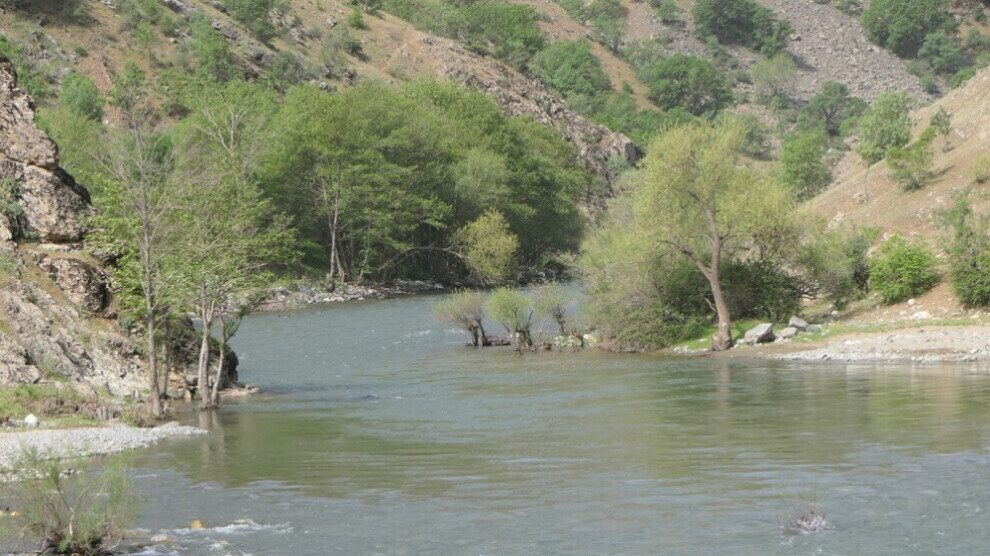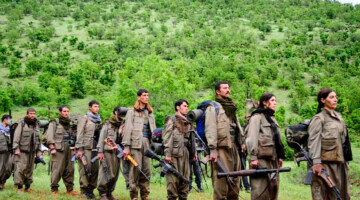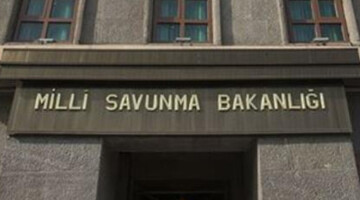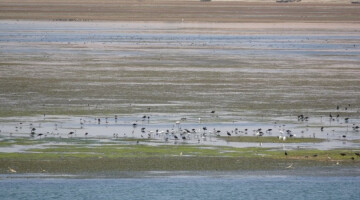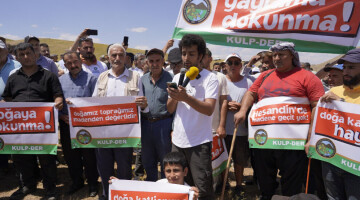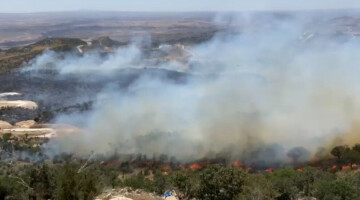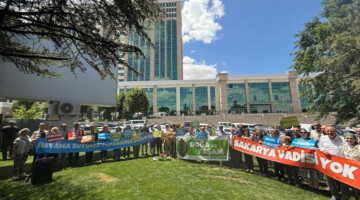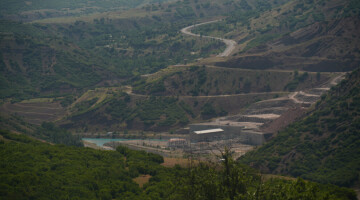The village of Riz in the province of Bingöl has a long history. The village was burned down three times and repopulated. Now it is supposed to disappear in a reservoir.
The village of Riz is located in the Dara Hênê (Genç) province of Bingöl in a picturesque natural setting. Surrounded by mountains, the village has a long history as a settlement area. The actual name of the village Riz comes from the Armenian language and means paradise. The last century, however, marked the village with pain and suffering. In 1915 the village was evacuated as part of the Armenian genocide and the Armenian population was deported and most of them murdered.
The name of the village was changed to Sağgözü by the Ottomans. After the Sheik Saîd uprising, the Kurdish population who had settled there was expelled and the village burned down for the second time. But the people were not deterred and went back. As part of the policy of the 1990s, the village was again burned down by the Turkish army in 1993. In 2000 the displaced people came back and rebuilt their place.
Now the village is threatened with disappearance as it would become a reservoir.
The village has a long tradition of resistance. It was one of the centers of Sheik Said uprising and is famous for its support for the Kurdish revolution. The entire region that is to be flooded by a dam project is one of the most determined resistance regions in the heart of Northern Kurdistan.
ANF correspondents have visited villages in the region affected by the dam project in the past few days. The villages of Derxust and Dibek are on the road to Lice. Due to the military operation that has been going on there for months, a devastated landscape has replaced the beautiful forest. The trees were pulled up by the roots by the soldiers. A warm wind blows on arrival in the village of Riz. The beauty of spring has given bright colours to the whole area. The residents of the village speak the Kurdish dialect Kirmancki. Almost everyone in the village has a perfect command of their mother tongue, despite the policy of assimilation. The villagers built the road to Dara Hênê and Lice themselves with their own resources. The villagers recently received information that a dam was to be built in their region. If this project is implemented, over a hundred villages from Bingöl to Amed will be submerged by water.
The village was burned in 1915, 1925 and 1993
The chairman of the Association for the Preservation of Nature and the Cultural Heritage of the Sarim Basin, Emin Turhalli, is also from Riz. He was born in 1966 as one of ten siblings.
He says: “My brother Abdurrahman and I live in this village. According to the accounts of our ancestors, first the Persians lived here, then the Armenians came to this region, and now Kurds are living here. Our grandparents talked about Armenians all the time.”
He recalls the destruction of the village in 1915, 1925 and 1993 and adds: “The people here were repeatedly displaced and the village burned down. The state continues with this policy. Now they want to sacrifice the village to a dam project. If the project is implemented, the village will be evacuated. The people who live here love this village and its nature. But when nature disappears, the villagers will have to go. Nature is life and we do not accept the dam project. The project harms both the ecosystem and the people."
Turhalli says that there are about 100 villages in the region that make a living from cattle breeding and adds: “The area for which the project is planned is a region that stretches from Bingöl to Amed and is irrigated by the Sarim river. This basin is truly an oasis for growing fruit and vegetables. Thanks to agricultural production, which is an important part of people's livelihoods, walnuts, apples, beans, tobacco, wheat, barley, grapes and many other vegetables, fruits and grains are grown in the area where the project would be carried out. The area is also very important for livestock and beekeeping. With this project, people's livelihoods will disappear under water."
Residents can't see future outside of village
Şerif Uvat (72) is also from Riz. He says: “When they came to the village, they said they were working to supply energy, but then it turned out that they wanted to build a dam. They want to drive us out of our own land. If we have to leave our village, where should we go at our age? How are we supposed to survive? Doesn't anyone think about it?"
Asiya Uvat, 65, adds: “We have lived here all our life. We live thanks to the livestock industry. We cannot go to Amed and rent a room there. I have nine children and they all live in Amed. They also have a lot of problems. My husband is sick. There's no way we can get out of here and live anywhere else. We don't want to leave our village. We don't want a dam to be built here."
Sadullah Oruk talks about his cancer and says: “I can't live with this disease anywhere else. It is the nature of the village that is good for me. If a dam is built here, I don't know what we will be doing, where we will go, and how we will make a living. We live in our own village with nature and don't want to go anywhere else. We earn our living from agriculture. I don't know what I could do if I were to to go into town. If they build a dam here, all living beings will be drowned, our nature will be destroyed. Frogs, fish, snakes and many other creatures live here in this valley. Dams kill these animals. I don't want a dam here. I want to live in my village, I don't want to go to town and suffer there. We don't want a dam to be built here."

